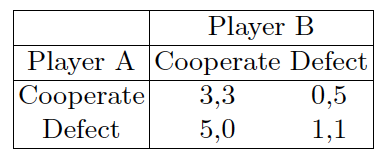15-Co-evolutionarySystems
Co-Evolutionary Systems
Motivation
Cooperative vs Competitive co-evolution
Approaches
Motivation
- So far: problems with easy to measure fitness
- More difficult: fitness depending on context :
- Solution represents a strategy that works in opposition to some
competitor (chess)
- Solution being evolved does not represent a complete solution (set
of traffic-light controllers)
- In nature: adaptation of a biological species
- Adaptive value is determined by the evolutionary niche which is
determined by the other organisms:
- Positive effect (mutualism /symbiosis ), e.g . plants and
insects
- Negative effect (predation/parasitism ), e.g . foxes and
rabbits
- Co-evolution: the landscape “seen” by each species is affected by
the configuration of all other interacting species and will move
Co-evolution
- Applications:
- Co-evolution of a population of partial models in Michigan-style
LCS
- Evolution of game playing strategies
- Implementations:
- Both cooperative and competitive
- Using both single and multiple species models
Cooperative Co-evolution
- Models in which a number of different species, each representing
part of a problem, cooperate in order to solve a larger problem
- High dimensional function optimization
- Job shop scheduling
- Advantage: effective function decomposition
- Disadvantage: relies on user to subdivide problem
- Difficulty: how to pair the populations to gain a fitness value
Competitive Co-evolution
- Model where individuals compete against each other to gain fitness
at each others expense
- Iterated prisoner’s dilemma
 15-Co-evolutionarySystems/ch15-Co-evolutionary_Systems-20140.png
15-Co-evolutionarySystems/ch15-Co-evolutionary_Systems-20140.png
Algorithmic Adaptations
- Choice of context can significantly influence the EA
performance
- Adaptations include:
- Averaging over more contexts
- Include history (archive of past solutions) to avoid “cycling”

